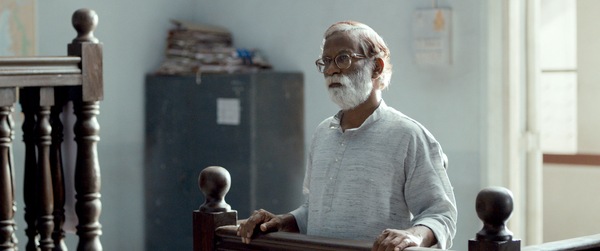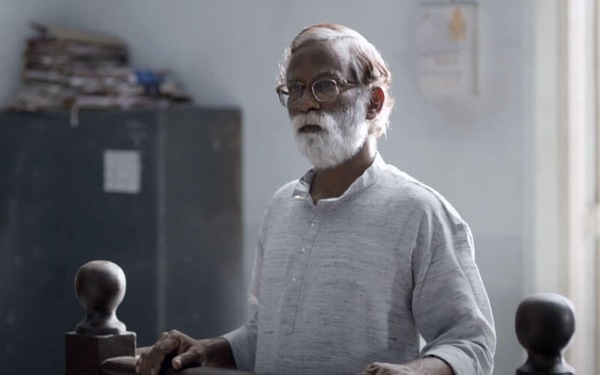The Court: A Postmodern Critique of the Indian Justice System

- Sourav Kapri
Film Companion
Last Updated: 02.15 PM, Sep 19, 2022

In the most Kafkaesque manner, Chaitanya Tamhane’s directorial debut Court (2014) takes on the task of laying bare the “judicial nightmares” through the case of one Narayan Kamble (played by Vira Sathidar), a Marathi protest-singer and Dalit activist, who gets arrested on a bizarre charge and is led through numerous trials in the Mumbai sessions court.
The broader reception of the film, which had its debut at the 71st Venice International Film Festival in 2014, and the numerous awards it has bagged is deserving in that the film examines and showcases fragmentary human nature. As taken up by the director, a process of constant association-disassociation has deemed notions like law and justice irrelevant and absurd.
Though the film centres around a certain case involving a certain man and his trial, somewhere along the way the audience cannot help but notice how the film detaches itself from its central plot to revolve around events that are barely relevant to the actual case. Yet again, everything connects loosely, as if to call out the farce called “court.”
Kamble is arrested by the police on the charge of abetment to suicide when a manhole worker named Vasudev Pawar commits suicide after being influenced, allegedly, by Kamble’s song. A middle-class lawyer, Vinay Vora (played by Vivek Gomber), is generous enough to take Kamble’s case. Vora belongs to a well-to-do family, is well behaved, drives his own car, goes out with his bourgeoise friends at pubs playing English songs and lives away from his parents but visits them often. Yet again, on closer scrutiny, he is also the one who shops without taking a glance at the price tag, calls Subodh his ‘friend’ and the very next moment, in an argument with his mother, claims Subodh to be someone he is meeting only for the fourth time. His hypocrisy establishes him to be someone who tries to maintain a life living behind the facade of an elite, capitalist society. His taking up the case of Kamble might be nothing but similar to picking items in a grocery store without even checking a price tag!
Besides Vinay, the Public Prosecutor Nutan (played by Geetanjali Kulkarni) and Judge Sadavarte (played by Pradeep Joshi) are the two characters whose lives are highly focused upon in the film. Nutan is not the picture of the so-called progressive, modern-day woman. She sticks to maintaining the ethical patterns within the family as well as the court. She doesn’t speak English as fluently as Vora does. Both Nutan and Judge Sadavarte become the epitome of archaic laws – Nutan goes on reading the laws for about two minutes, she calls “irrational” Goyamari practices “sacred,” while the Judge dismisses a hearing in the pretext of a woman not having dressed in a proper manner. Sadavarte is more focused on dictating statements to the typist rather than judging the case properly. Despite Kamble being the driving force of the entire plot, his presence is rarely felt, and his screen time is kept to the minimum. Vinay, Nutan and Sadavarte receiving the spotlight comes as an attempt to show how these characters are never truly about serving justice to the marginalized people, and perhaps to people in general.
The film gets a vital edge in the hands of cinematographer Mrinal Desai. The use of wide shots, a technique used in western movies, is blended with the cinematic stills towards the end of many scenes. This develops a conscious sense of incomprehensibility of the justice system. At one point, towards the end, the film seems to be ending through a still that runs for almost more than a minute. This deliberate rendition takes us to the next scene, as it opens with the Judge taking a summer vacation when there are many people in the lurch, making the critique of the system even cruder.
Set in Maharashtra, the film takes into account all four languages that are spoken in the state –Marathi, Gujrati, Hindi and English. In doing so, Tamhane not only depicts the rich culture but also complicates the power dynamics. In the court, Nutan speaks mostly in Marathi and sometimes in unpolished English, Vora speaks mostly in fluent English and Hindi and fails to understand at times what Nutan talks in Marathi, at home Vora speaks in Gujrati. This brings into play a sense of deception and misinformation that pervades the justice system and also hints at how truth gets manipulated very often.
Narayan Kamble sings and speaks in Marathi and at a point, during his trials, he states that he prefers to communicate in Marathi rather than Hindi. His songs, in Marathi, urge the common people to know one’s enemy during these tough times:
Jaan, Jaan, Jaan…dushmana jaan re…Kathin aala kaad…Maati se phute naal re.
His songs set out to bring out the true colour of society. After he receives bail, he continues his work. His second song is quite bold enough to call for the emancipation of art. Amidst the chase for power and control, art, as his song would convey, has become mere “hogwash” and a “deception in the name of aesthetics.” As the film begins, we see Narayan’s voice getting intervened by the police. In the second half of the film, we see the police intervene again–– this time he is arrested from the printing press where his book Apamanacha Itihas (History of Humiliation) was being printed. So, through a character like Kamble, the film sets out to raise voice for the establishment of artistic endeavour that is in constant threat of getting censored.
The film makes a successful attempt at bringing the “era of darkness” to the foreground where, as Kamble’s song would pronounce, the marginal people don’t get justice, artistic endeavours do not find expression and truth has lost its voice. Justice, which has failed miserably, is asleep like Sadavarte sleeping towards the end of the film, and that it needs a jolt to wake up, as the kids wake Sadavarte up with a scream, is made clear.
